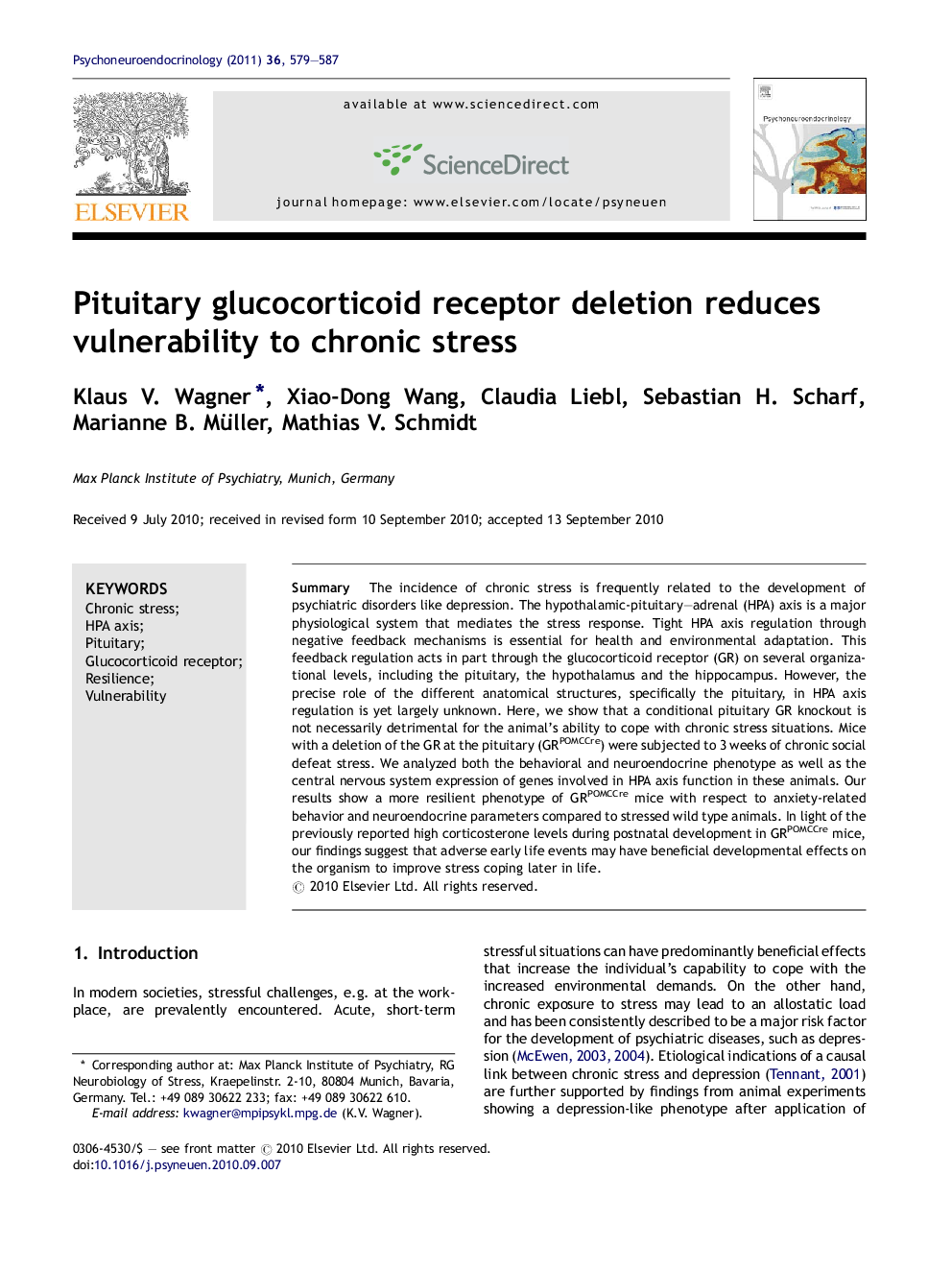| Article ID | Journal | Published Year | Pages | File Type |
|---|---|---|---|---|
| 337036 | Psychoneuroendocrinology | 2011 | 9 Pages |
SummaryThe incidence of chronic stress is frequently related to the development of psychiatric disorders like depression. The hypothalamic-pituitary–adrenal (HPA) axis is a major physiological system that mediates the stress response. Tight HPA axis regulation through negative feedback mechanisms is essential for health and environmental adaptation. This feedback regulation acts in part through the glucocorticoid receptor (GR) on several organizational levels, including the pituitary, the hypothalamus and the hippocampus. However, the precise role of the different anatomical structures, specifically the pituitary, in HPA axis regulation is yet largely unknown. Here, we show that a conditional pituitary GR knockout is not necessarily detrimental for the animal's ability to cope with chronic stress situations. Mice with a deletion of the GR at the pituitary (GRPOMCCre) were subjected to 3 weeks of chronic social defeat stress. We analyzed both the behavioral and neuroendocrine phenotype as well as the central nervous system expression of genes involved in HPA axis function in these animals. Our results show a more resilient phenotype of GRPOMCCre mice with respect to anxiety-related behavior and neuroendocrine parameters compared to stressed wild type animals. In light of the previously reported high corticosterone levels during postnatal development in GRPOMCCre mice, our findings suggest that adverse early life events may have beneficial developmental effects on the organism to improve stress coping later in life.
